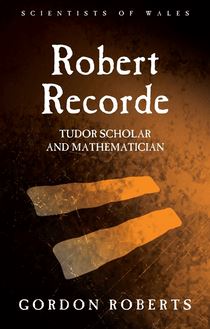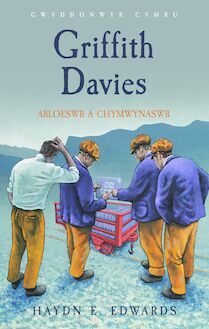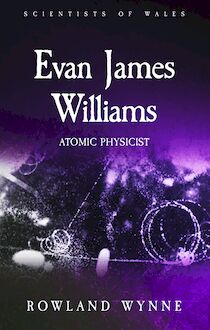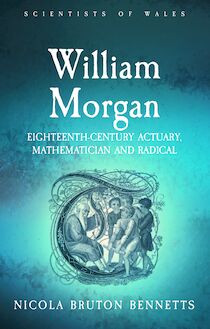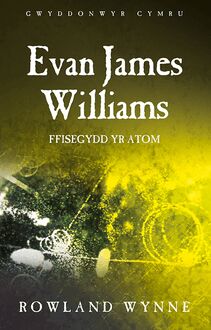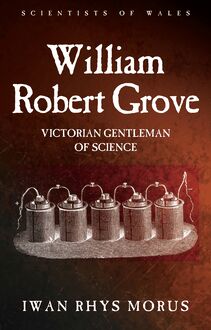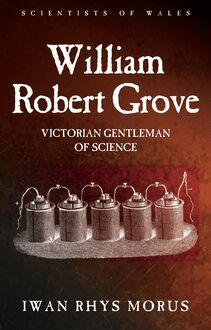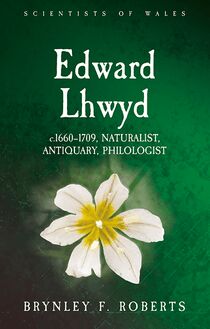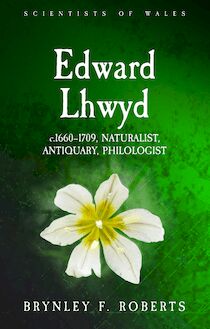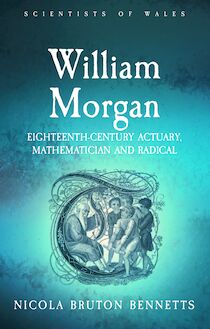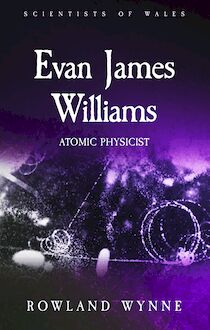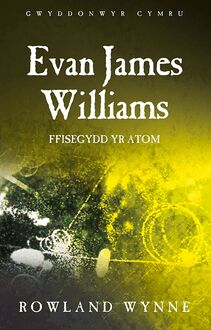-
 Univers
Univers
-
 Ebooks
Ebooks
-
 Livres audio
Livres audio
-
 Presse
Presse
-
 Podcasts
Podcasts
-
 BD
BD
-
 Documents
Documents
-
- Cours
- Révisions
- Ressources pédagogiques
- Sciences de l’éducation
- Manuels scolaires
- Langues
- Travaux de classe
- Annales de BEP
- Etudes supérieures
- Maternelle et primaire
- Fiches de lecture
- Orientation scolaire
- Méthodologie
- Corrigés de devoir
- Annales d’examens et concours
- Annales du bac
- Annales du brevet
- Rapports de stage
La lecture à portée de main
Vous pourrez modifier la taille du texte de cet ouvrage
Découvre YouScribe en t'inscrivant gratuitement
Je m'inscrisDécouvre YouScribe en t'inscrivant gratuitement
Je m'inscrisEn savoir plus
Vous pourrez modifier la taille du texte de cet ouvrage
En savoir plus

Description
This book presents the life and work of Professor Evan James Williams, described as one of Wales’s most eminent scientists. Williams played a prominent part in the early twentieth-century revolution in physics with the emergence of quantum science, and was an able experimentalist and accomplished theoretician who made notable contributions in atomic physics and the discovery of a new elementary particle. From humble beginnings in rural Cardiganshire, his stellar career is charted in this book as he climbed the academic ladder at a number of universities, culminating in his appointment as Professor of Physics at Aberystwyth, and election to a Fellowship of the Royal Society. During the Second World War, Williams was instrumental in applying Operational Research to thwart the threat of German submarines in the Atlantic; his career was cut short, however, by his early death in 1945.
Series Editor’s Foreword
List of illustrations
Preface xiii
1 ‘I have a dream’
2 Shaking the foundations
3 Doctorates
4 New horizons
5 Achieving eminence
6 Securing the seas
7 Hope unfulfilled
8 Epilogue
Notes
List of publications by Evan James Williams
Information on works cited
Index
Sujets
Informations
| Publié par | University of Wales Press |
| Date de parution | 01 juin 2020 |
| Nombre de lectures | 0 |
| EAN13 | 9781786835734 |
| Langue | English |
Informations légales : prix de location à la page 0,1074€. Cette information est donnée uniquement à titre indicatif conformément à la législation en vigueur.
Extrait
SCIENTISTS OF WALES
Evan James Williams
SCIENTISTS OF WALES
Series Editor
Gareth Ffowc Roberts
Bangor University
Editorial Panel
Iwan Rhys Morus
Aberystwyth University
John V. Tucker
Swansea University
SCIENTISTS OF WALES
Evan James Williams
ATOMIC PHYSICIST
ROWLAND WYNNE
Translation by Gareth Ffowc Roberts and Rowland Wynne
Pulchra sunt quae videntur,
Pulchroria quare scientur,
Longe pulcherrima quae ignorantur.
Niels Steensen (1638–86)
Danish scientist and Catholic priest
Beautiful are the things we see,
More beautiful those we understand,
Much the most beautiful those we do not comprehend.
trans. Abraham Pais, in Niels Bohr’s Times, in Physics, Philosophy, and Polity (Oxford: Oxford University Press, 1991)
Evan James Williams
(with the kind permission of the Niels Bohr Archive, Copenhagen)
© Rowland Wynne, 2020
All rights reserved. No part of this book may be reproduced in any material form (including photocopying or storing it in any medium by electronic means and whether or not transiently or incidentally to some other use of this publication) without the written permission of the copyright owner except in accordance with the provisions of the Copyright, Designs and Patents Act 1988. Applications for the copyright owner’s written permission to reproduce any part of this publication should be addressed to the University of Wales Press, University Registry, King Edward VII Avenue, Cardiff CF10 3NS.
www.uwp.co.uk
British Library Cataloguing-in-Publication Data
A catalogue record for this book is available from the British Library.
ISBN 978-1-78683-571-0 eISBN 978-1-78683-573-4
The right of Rowland Wynne to be identified as author of this work has been asserted in accordance with sections 77, 78 and 79 of the Copyright, Designs and Patents Act 1988.
The publisher acknowledges the financial support of the Books Council of Wales.
The publisher has no responsibility for the persistence or accuracy of URLs for any external or third-party internet websites referred to in this book, and does not guarantee that any content on such websites is, or will remain, accurate or appropriate.
Cover image: Cloud chamber particle paths. Photograph in the Archives of Aberystwyth University (E. J. Williams Papers).
CONTENTS
Series Editor’s Foreword
List of illustrations
Preface
1 ‘I have a dream’
2 Shaking the foundations
3 Doctorates
4 New horizons
5 Achieving eminence
6 Securing the seas
7 Hope unfulfilled
8 Epilogue
Notes
List of publications by Evan James Williams
Bibliography
To my grandchildren Alex, Iwan, Mali and Ruby
SERIES EDITOR’S FOREWORD
W ales has a long and important history of contributions to scientific and technological discovery and innovation stretching from the Middle Ages to the present day. From medieval scholars to contemporary scientists and engineers, Welsh individuals have been at the forefront of efforts to understand and control the world around us. For much of Welsh history, science has played a key role in Welsh culture: bards drew on scientific ideas in their poetry; renaissance gentlemen devoted themselves to natural history; the leaders of early Welsh Methodism filled their hymns with scientific references. During the nineteenth century, scientific societies flourished and Wales was transformed by engineering and technology. In the twentieth century the work of Welsh scientists continued to influence developments in their fields.
Much of this exciting and vibrant Welsh scientific history has now disappeared from historical memory. The aim of the Scientists of Wales series is to resurrect the role of science and technology in Welsh history. Its volumes trace the careers and achievements of Welsh investigators, setting their work within their cultural contexts. They demonstrate how scientists and engineers have contributed to the making of modern Wales as well as showing the ways in which Wales has played a crucial role in the emergence of modern science and engineering.
RHAGAIR GOLYGYDD Y GYFRES
O ’r Oesoedd Canol hyd heddiw, mae gan Gymru hanes hir a phwysig o gyfrannu at ddarganfyddiadau a menter gwyddonol a thechnolegol. O’r ysgolheigion cynharaf i wyddonwyr a pheirianwyr cyfoes, mae Cymry wedi bod yn flaenllaw yn yr ymdrech i ddeall a rheoli’r byd o’n cwmpas. Mae gwyddoniaeth wedi chwarae rôl allweddol o fewn diwylliant Cymreig am ran helaeth o hanes Cymru: arferai’r beirdd llys dynnu ar syniadau gwyddonol yn eu barddoniaeth; roedd gan wŷr y Dadeni ddiddordeb brwd yn y gwyddorau naturiol; ac roedd emynau arweinwyr cynnar Methodistiaeth Gymreig yn llawn cyfeiriadau gwyddonol. Blodeuodd cymdeithasau gwyddonol yn ystod y bedwaredd ganrif ar bymtheg, a thrawsffurfiwyd Cymru gan beirianneg a thechnoleg. Ac, yn ogystal, bu gwyddonwyr Cymreig yn ddylanwadol mewn sawl maes gwyddonol a thechnolegol yn yr ugeinfed ganrif.
Mae llawer o’r hanes gwyddonol Cymreig cyffrous yma wedi hen ddiflannu. Amcan cyfres Gwyddonwyr Cymru yw i danlinellu cyfraniad gwyddoniaeth a thechnoleg yn hanes Cymru, â’i chyfrolau’n olrhain gyrfaoedd a champau gwyddonwyr Cymreig gan osod eu gwaith yn ei gyd-destun diwylliannol. Trwy ddangos sut y cyfrannodd gwyddonwyr a pheirianwyr at greu’r Gymru fodern, dadlennir hefyd sut y mae Cymru wedi chwarae rhan hanfodol yn natblygiad gwyddoniaeth a pheirianneg fodern.
ILLUSTRATIONS
Frontispiece: Evan James Williams (with the kind permission of the Niels Bohr Archive, Copenhagen)
1 Sampler by Elizabeth Williams, E. J. Williams’s mother
(with the kind permission of the Department of Physics, Aberystwyth University)
2 Two school friends, E. J. Williams on the left and E. T. (Ianto) Davies on the right
(with the kind permission of Goronwy Evans)
3 E. J. Williams as a student at University College Swansea c .1921
(with the kind permission of Goronwy Evans)
4 Department of Physics, University of Manchester 1927
(copyright of the University of Manchester)
5 Cavendish Laboratory staff and researchers, University of Cambridge 1929
(with the kind permission of the Cavendish Laboratory, University of Cambridge)
6 Copenhagen Conference 1933
(with the kind permission of the Niels Bohr Archive, Copenhagen)
7 Kharkov Conference 1934
(with the kind permission of the Niels Bohr Archive, Copenhagen)
8 Physics Society, University of Liverpool 1936–7
(by courtesy of the University of Liverpool Library; reference number A084/1/62)
9 Department of Physics, University College of Wales, Aberystwyth 1943
(with the kind permission of the Department of Physics Archive, Aberystwyth University)
PREFACE
L ike many others, I have fond memories of my time studying physics at the University College of Wales, Aberystwyth, at the beginning of the 1960s. This is not surprising, bearing in mind the vibrancy of student life. But in addition to ‘extra-curricular’ activities, memories remain of a number of lectures and laboratory sessions. Among them, I remember a lecture given by Morrice Job – on atomic physics, I believe – in which he drew our attention to one of the previous heads of department who had been seconded on government service during the Second World War, but who had died tragically before he would return to Aberystwyth. His name was Evan James Williams, and the lecturer’s pride in his brilliance was evident. I imagine that this is what impressed me. Every one of those present received copies of two reprints describing Williams’s pioneering work at Aberystwyth; the copies I was given then remain in my possession.
Over the years, I came across Williams’s name from time to time. Shortly after leaving Aberystwyth, I read an article on Williams by Idris Jones in one of the early numbers of Y Gwyddonydd . Some time later, I obtained a second-hand copy of a book edited by J. Tysul Jones comprising a series of articles and tributes marking twenty-five years since Williams’s death. Reading the book deepened my awareness of, and respect for, him. Then, in 1995, fifty years after his death, I learnt that the Institute of Physics had placed a plaque on the house where Williams had grown up in Cwmsychbant, Cardiganshire, marking his birthplace and the role he played in the development of physics in the twentieth century.
A few years ago, whilst on holiday in Copenhagen, a friend and I took the opportunity to visit the Niels Bohr Archive, which houses documents including correspondence related to the world-renowned physicist after whom it is named. The archive is located in the Niels Bohr Institutet, the University of Copenhagen’s physics department, and it was a pleasant surprise to see a photograph of Williams on one of the archive walls. The photograph recorded the year spent by Williams working with Bohr at the Institutet in Copenhagen, and we also read the correspondence between Bohr and Williams (more than fifty letters) held in the archive. The visit led to the preparation of an article outlining the relationship between Bohr and three scientists from Wales, with Williams being one of the three. Whilst preparing the article, I came across a book by Goronwy Evans about Williams and his family, in which there is a picture of a seminar held at the Institutet (known prior to Bohr’s death as Universitetets Institut for teoretisk Fysik), with Williams sitting in amongst some of the foremost physicists of the time.
Williams was a name, therefore, that recurred over the years. There was also a family link in that I am distantly related to William Lewis, headmaster at Llandysul County School during the time Williams was a pupil, and who was an important influence in guiding the boy towards mathematics and physics. For me, there was also a certain poignancy in relating that had Williams not died prematurely, and had he stayed at Aberystwyth, it is more than likely that I would have attended his lectures.
When I was invited to prepare Williams’s biography, I had little idea where the journey would take me, and
-
 Univers
Univers
-
 Ebooks
Ebooks
-
 Livres audio
Livres audio
-
 Presse
Presse
-
 Podcasts
Podcasts
-
 BD
BD
-
 Documents
Documents
-
Jeunesse
-
Littérature
-
Ressources professionnelles
-
Santé et bien-être
-
Savoirs
-
Education
-
Loisirs et hobbies
-
Art, musique et cinéma
-
Actualité et débat de société
-
Jeunesse
-
Littérature
-
Ressources professionnelles
-
Santé et bien-être
-
Savoirs
-
Education
-
Loisirs et hobbies
-
Art, musique et cinéma
-
Actualité et débat de société
-
Actualités
-
Lifestyle
-
Presse jeunesse
-
Presse professionnelle
-
Pratique
-
Presse sportive
-
Presse internationale
-
Culture & Médias
-
Action et Aventures
-
Science-fiction et Fantasy
-
Société
-
Jeunesse
-
Littérature
-
Ressources professionnelles
-
Santé et bien-être
-
Savoirs
-
Education
-
Loisirs et hobbies
-
Art, musique et cinéma
-
Actualité et débat de société
- Cours
- Révisions
- Ressources pédagogiques
- Sciences de l’éducation
- Manuels scolaires
- Langues
- Travaux de classe
- Annales de BEP
- Etudes supérieures
- Maternelle et primaire
- Fiches de lecture
- Orientation scolaire
- Méthodologie
- Corrigés de devoir
- Annales d’examens et concours
- Annales du bac
- Annales du brevet
- Rapports de stage

